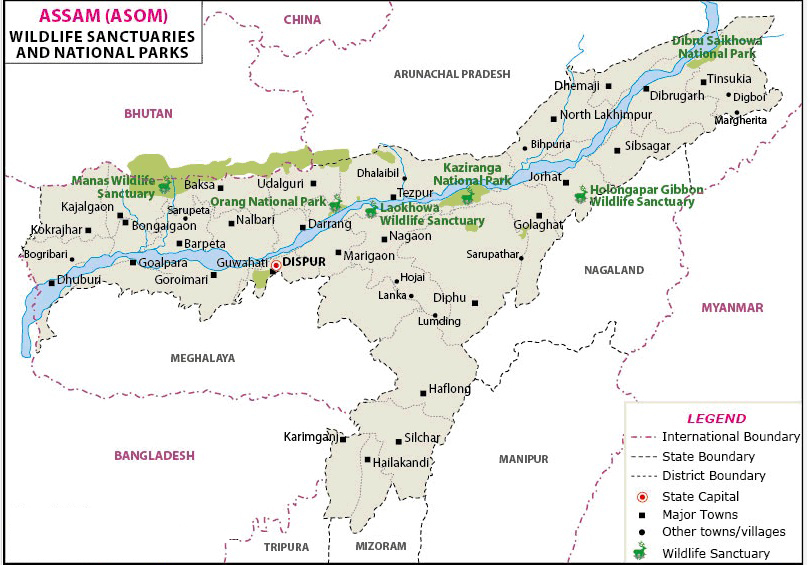Wetland Bird Census at Kaziranga National Park | 13 Jan 2020
Why in News
The second wetland bird count was conducted in the Kaziranga National Park from 9th- 10th January 2020.
- The first wetland bird survey was conducted in 2018.
Key Findings
- Number of Birds
- A total of 19,225 birds belonging to 96 species under 80 families was reported which is significantly higher than that of 2018.
- Having 96 species of wetland birds is one of the highest for wildlife reserves in India.
- Range wise Distribution
- The survey covered four ranges of the park — Agoratoli, Bagori, Kohora and Burapahar.
- More than half the birds (9,924) and 85 of the 96 species were recorded in Agoratoli Range. This was because Sohola, the largest of Kaziranga's 92 perennial wetlands, is in this range.
Kaziranga National Park
- Location: It is located in the State of Assam and covers 42,996 ha. It is the single largest undisturbed and representative area in the Brahmaputra Valley floodplain.
- Legal Status
- It was declared as a National Park in 1974.
- It has been declared a tiger reserve since 2007. It has a total tiger reserve area of 1,030 sq km with a core area of 430 sq. km.
- International Status
- It was declared a UNESCO World Heritage Site in 1985.
- It is recognized as an Important Bird Area by BirdLife International.
- Important Species Found
- It is the home of the world's most one-horned rhinos.
- Much of the focus of conservation efforts in Kaziranga are focused on the 'big four' species— rhino, elephant, Royal Bengal tiger and Asiatic water buffalo.
- The 2018 census had yielded 2,413 rhinos and approximately 1,100 elephants.
- As per the figures of tiger census conducted in 2014, Kaziranga had an estimated 103 tigers, the third highest population in India after Jim Corbett National Park (215) in Uttarakhand and Bandipur National Park (120) in Karnataka.
- Kaziranga is also home to 9 of the 14 species of primates found in the Indian subcontinent.
- Rivers and Highways
- The National Highway 37 passes through the park area.
- The park also has more than 250 seasonal water bodies, besides the Diphlu River running through it.

